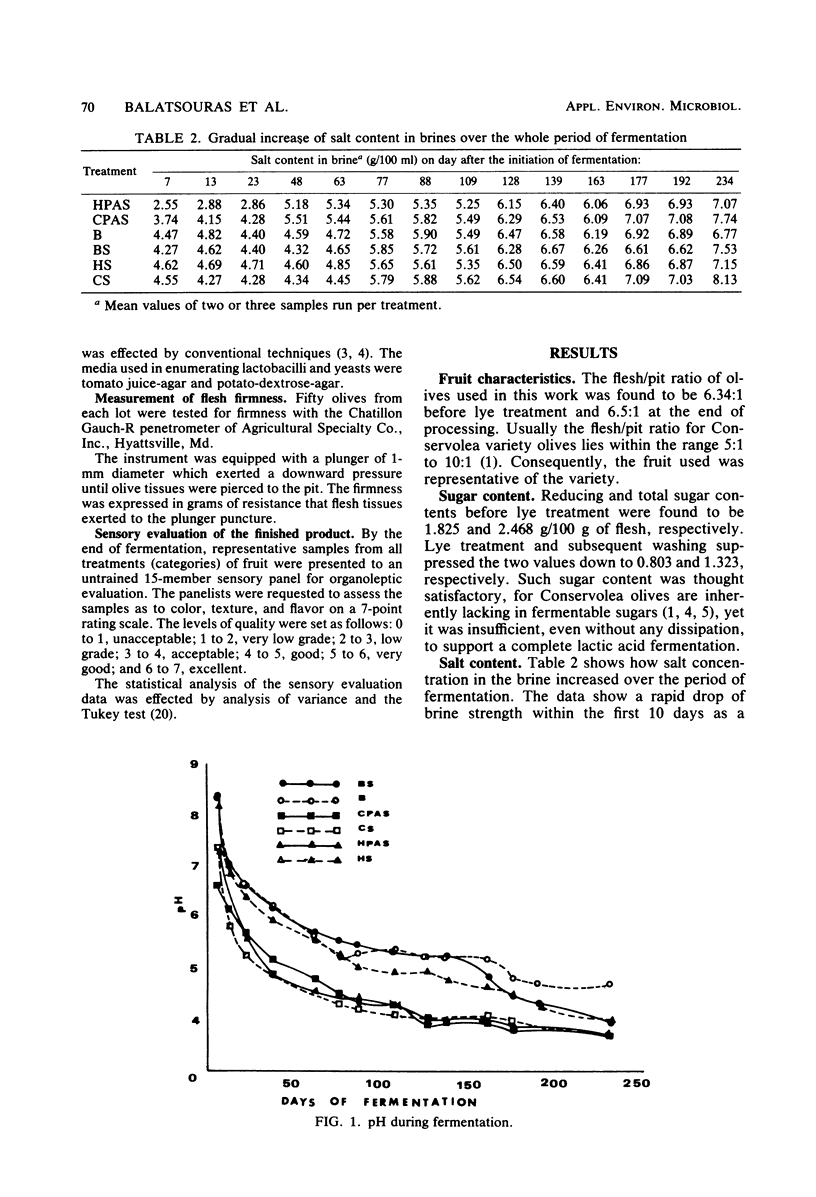Abstract
The various factors assumed to retard or even prevent the lactic acid fermentation of Conservolea variety green olives have been investigated. Of these, the sugar supplement along with the appropriate lactic starter culture supported a complete lactic acid fermentation. Acidification, particularly of starting brine, was shown to have little or no effect, whereas heat shock treatment improved the olive fermentability slightly without modifying the course of fermentation. These findings indicate that Conservolea olives do not contain phenolic compounds in concentrations inhibitory to lactic acid bacteria.
Full text
PDF






Selected References
These references are in PubMed. This may not be the complete list of references from this article.
- Etchells J. L., Borg A. F., Kittel I. D., Bell T. A., Fleming H. P. Pure culture fermentation of green olives. Appl Microbiol. 1966 Nov;14(6):1027–1041. doi: 10.1128/am.14.6.1027-1041.1966. [DOI] [PMC free article] [PubMed] [Google Scholar]
- Fleming H. P., Etchells J. L. Occurrence of an inhibitor of lactic Acid bacteria in green olives. Appl Microbiol. 1967 Sep;15(5):1178–1184. doi: 10.1128/am.15.5.1178-1184.1967. [DOI] [PMC free article] [PubMed] [Google Scholar]
- Fleming H. P., Walter W. M., Etchells J. L. Isolation of a bacterial inhibitor from green olives. Appl Microbiol. 1969 Nov;18(5):856–860. doi: 10.1128/am.18.5.856-860.1969. [DOI] [PMC free article] [PubMed] [Google Scholar]
- Fleming H. P., Walter W. M., Jr, Etchells J. L. Antimicrobial properties of oleuropein and products of its hydrolysis from green olives. Appl Microbiol. 1973 Nov;26(5):777–782. doi: 10.1128/am.26.5.777-782.1973. [DOI] [PMC free article] [PubMed] [Google Scholar]
- Garrido-Fernandez A., Vaughn R. H. Utilization of oleuropein by microorganisms associated with olive fermentations. Can J Microbiol. 1978 Jun;24(6):680–684. doi: 10.1139/m78-114. [DOI] [PubMed] [Google Scholar]
- Juven B., Henis Y. Studies on the antimicrobial activity of olive phenolic compounds. J Appl Bacteriol. 1970 Dec;33(4):721–732. doi: 10.1111/j.1365-2672.1970.tb02255.x. [DOI] [PubMed] [Google Scholar]
- SHASHA B., LEIBOWITZ J. Oleuropeic acid: a new compound from Olea europaea. Nature. 1959 Dec 26;184(Suppl 26):2019–2020. doi: 10.1038/1842019b0. [DOI] [PubMed] [Google Scholar]
- Walter W. M., Jr, Fleming H. P., Etchells J. L. Preparation of antimicrobial compounds by hydrolysis of oleuropein from green olives. Appl Microbiol. 1973 Nov;26(5):773–776. doi: 10.1128/am.26.5.773-776.1973. [DOI] [PMC free article] [PubMed] [Google Scholar]


